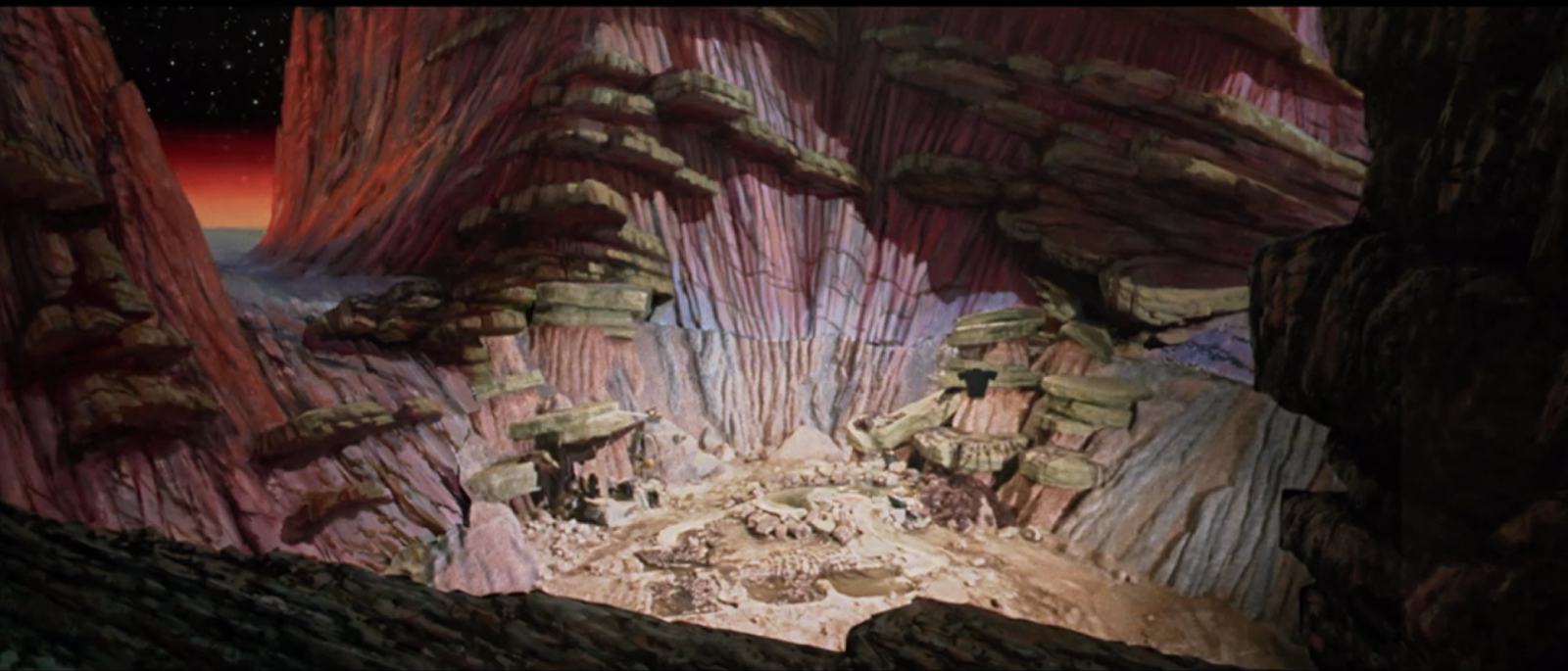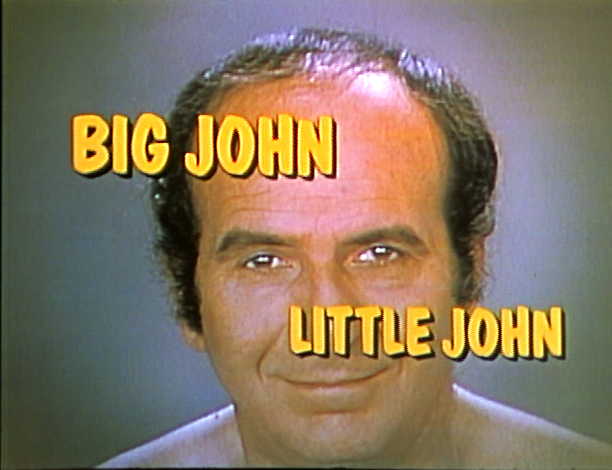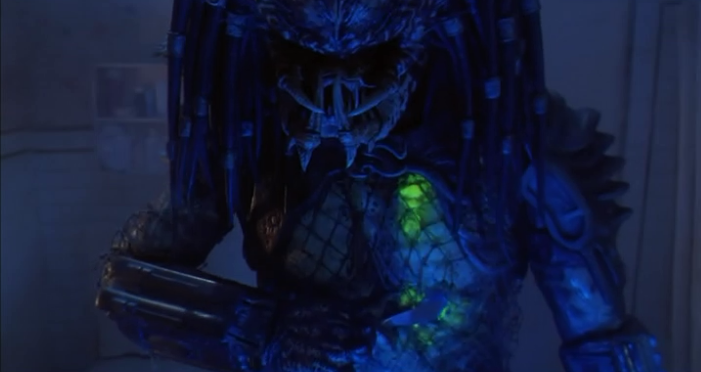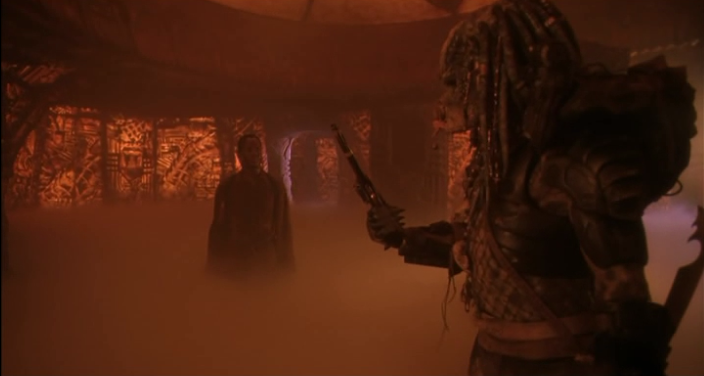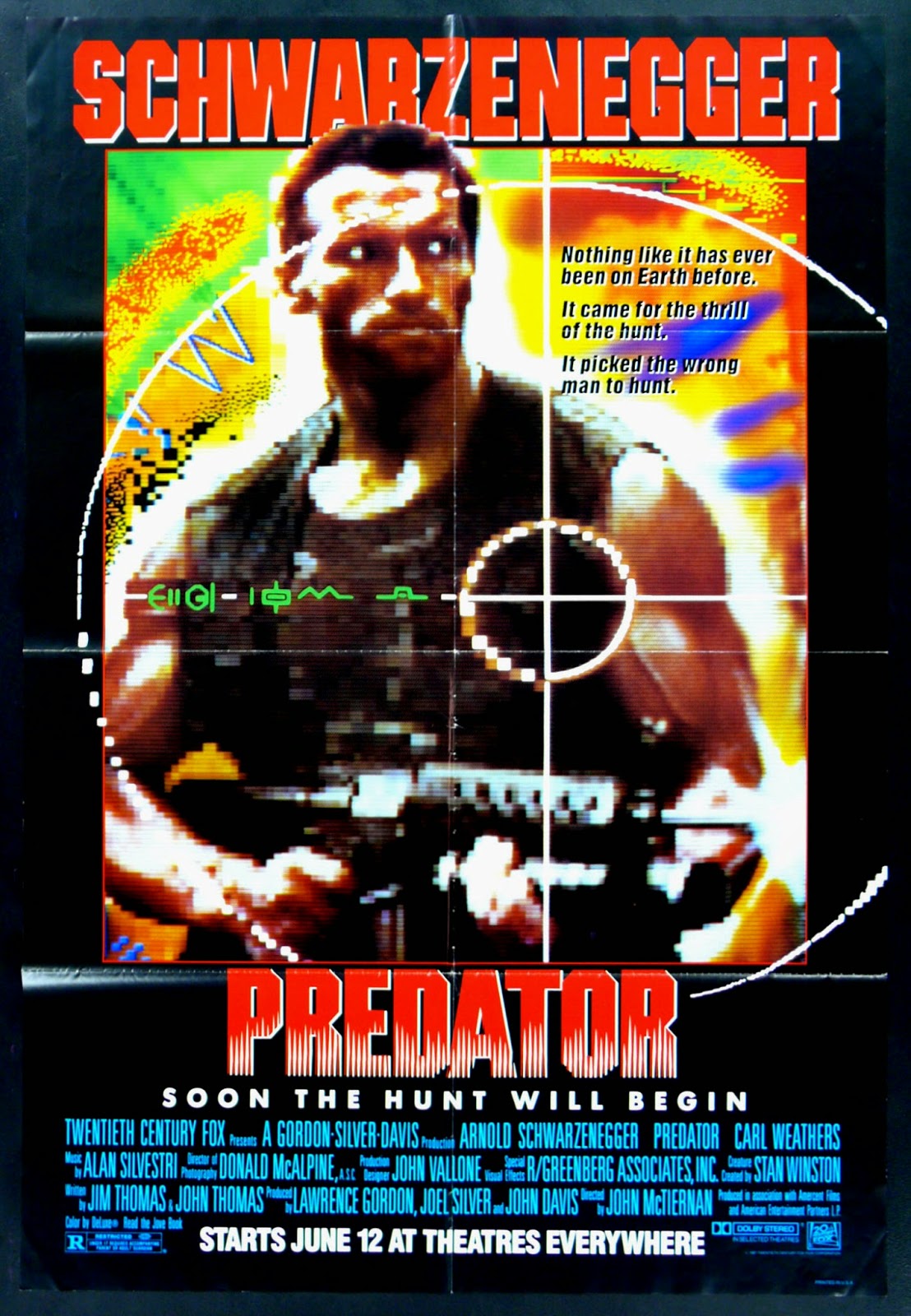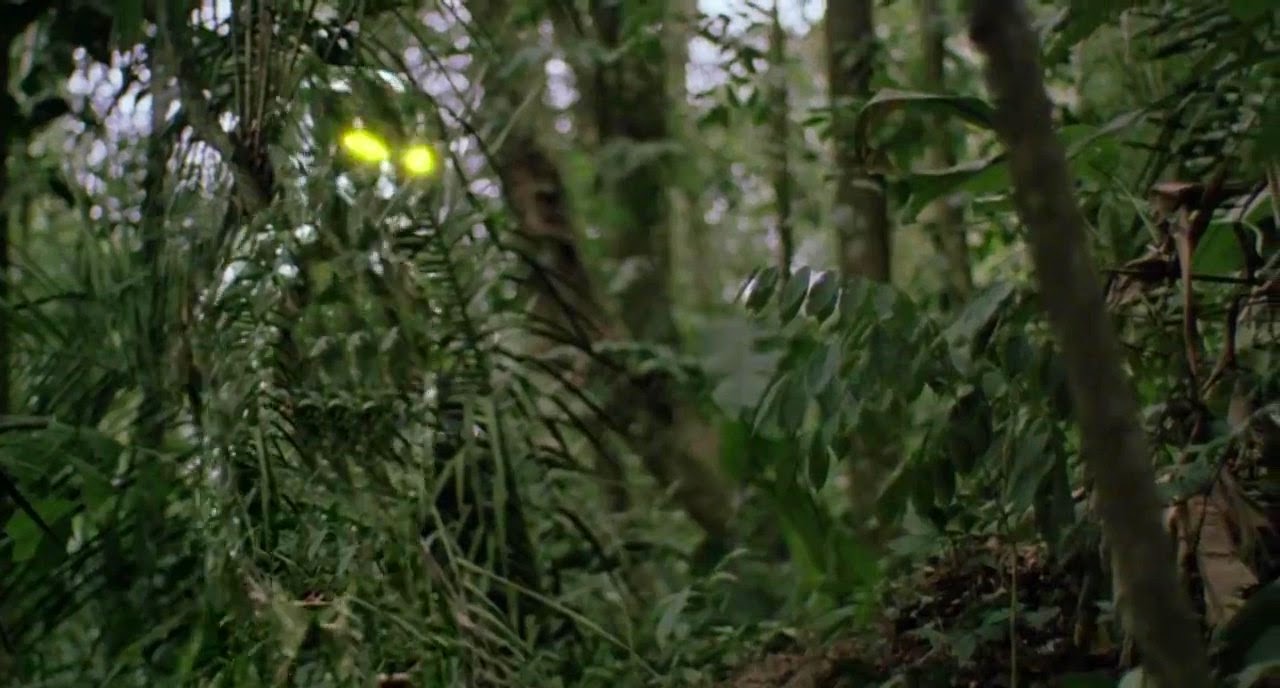George Pal and Byron Haskin’s Robinson Crusoe on Mars (1964) remains beloved by the generation that grew up with it in the late 1960's. By and large, genre critics praised the sci-fi film upon its original theatrical release and soon after, as well.
For example, author and scholar Jeff Rovin termed the film an “excellent and offbeat ride” and a “thoroughly convincing retelling of the classic tale” in A Pictorial History of Science Fiction Films (Citadel Press; 1975, page 131).
And while noting that the film is “not fast-paced,” the authors of Twenty All-Time Great Science Fiction Films observed that Robinson Crusoe on Mars “succeeds…in its ability to evoke a sense of wonder in the minds of its audience at the exploration of a new and different kind of world.”
Furthermore, the same authors wrote that director Haskin accomplished this task by making Mars itself one of the film’s essential or key characters (Arlington House; 1982, page 174).
That last observation is the most trenchant one because Robinson Crusoe on Mars impresses even today on the basis of many of its colorful and dynamic visualizations. Shot in Death Valley and buttressed by some still-impressive matte paintings, the film feels both authentic and vivid in its depiction of a desolate, lonely planetary surface.
At times in the film, the landscape itself feels almost oppressive in its craggy, mountainous appearance, and at other junctures -- such as the discovery of the polar ice caps -- it appears downright wondrous. The film conveys the idea of not just a single locale, but of an entire, harsh ecosystem, and that’s quite an accomplishment.
In terms of narrative, Robinson Crusoe on Mars succeeds too because it clearly has the literary model -- Daniel Defoe’s 1719 book -- to fall back on, and it needn’t veer too far from that impressive source material.
In fact, by retelling Defoe’s famous story in a “final frontier” setting, the 1964 film suggests some universal qualities about mankind. Specifically, Robinson Crusoe on Mars meditates about both the human desire to survive even when survival is damn near impossible, and about our need for companionship.
In fact, companionship is right up there with the other essentials to human life -- air, food, and water -- and Robinson Crusoe on Mars does a good job of exploring that powerful notion.
I count Robinson Crusoe as one of my favorite stories of all time, and find that in 2015 Robinson Crusoe on Mars still captures the essence of that classic tale well, even if all the details of life on Mars in the film don’t conform to modern scientific knowledge.
Indeed, this George Pal production remains just the brand of imaginative, colorful sci-fi epic that spurred my fascination with outer space and other worlds in the first place. And in its exploration of companionship as a key “resource” permitting humans to survive in any frontier, Robinson Crusoe on Mars makes a case about man in space that we must not forget.
When at last we travel to the stars, we should go in great numbers, because we will likely find it impossible to thrive there in isolation. As Robinson Crusoe on Mars reminds us, we need each other, whether here on Earth, in darkest space, or on the surface of the red planet.
In the near future, Mars Gravity Probe 1 narrowly avoids a disaster in planetary orbit, specifically a collision with an asteroid.
Unfortunately, the ship cannot hold altitude after altering its trajectory, and the crew must eject from the vessel.
Kit Draper (Paul Mantee) lands his craft in a crater, scuttling it, and finds that his commanding officer, McReady (Adam West) has died during his landing attempt. The ship’s monkey, Mona (The Woolly Monkey), however, has survived.
With Mona in tow, Draper attempts to solve the problems of human survival on Mars. He finds the atmosphere thin, and therefore breathable only for short durations, and must determine a way to maintain a breathable air supply. With the use of native rocks, he does just that. Draper’s next problem is locating water on Mars. When Mona doesn’t evidence signs of thirst, Draper decides to investigate her daily routine, and discovers a water source.
Sometime later, Draper sees a ship landing in the distance, and realizes that it is an interstellar craft. Alien slavers have come to Mars, but one of their slaves -- whom Crusoe names Friday (Victor Lundin) -- escapes from their custody. The two survivors become friends, and set about to evade the aliens for as long as possible.
Draper and Friday make a long trek to the polar ice caps, and there receive a happy transmission from an Earth vessel and rescue ship.
Robinson Crusoe on Mars remembers and translates to the “space age” virtually all of the important story beats of the famous Defoe literary antecedent.
In Robinson Crusoe, as you may recall, the sea-going protagonist escapes a shipwreck, and salvages what he can from it, with only the captain’s dog (and a cat or two) for companions. Crusoe then lives on an inhospitable island alone for some time, dwelling in a cave and growing his own food.
Over the course of his stay on the island, Crusoe becomes more religious, reading the Bible, and ultimately saves a man, whom he names Friday, from cannibals. He eventually converts Friday to Christianity, and together the men leave the island on an English ship.
In Robinson Crusoe on Mars, Kip Draper is marooned on the planet Mars, rather than on an island. He has no humans to keep him company, but rather an animal companion like the captain’s dog: the monkey named Mona. The alien slavers substitute for the novel’s cannibals, and of course, Crusoe’s Friday is a one-to-one corollary with Draper’s alien friend. The topic of the Divine and religion come up in both stories as well, with Draper quoting Scripture to the alien at times in the film. Finally, the two men are rescued by an Earth ship as the film closes.
Beyond its relocation of narrative points from the Defoe story, Robinson Crusoe on Mars’ strongest interlude occurs shortly before Draper first encounters Friday. He is ensconced in his home cave, at night, and the shadow of a humanoid falls across his transparent-rock cave door. Draper opens the door and suddenly encounters a silent, zombie-like McReady, who refuses to speak to him, or even acknowledge him.
Draper awakens --sleepwalking -- and realizes he has experienced a nightmare. This scene is creepy as hell, from the first appearance of the silhouette (surrounded by weird Martian lighting), to McReady’s unearthly demeanor as Draper desperately tries to make him talk to him. The scene beautifully expresses the absolute terror of Draper’s predicament as the only intelligent being, essentially, on an entire planet. He also, no doubt, feels survivor’s guilt. He lived, and McReady didn’t.
Importantly, this sequence in the film follows those in which the resourceful Draper has licked a number of survival problems. He has learned how to breathe on Mars (using yellow, air-producing rocks) and he has found food and water.
But the problem of companionship is not something he can tackle alone, and his so Draper fears his mind will fall apart, that he will start to lose his grip on sanity. Draper notes that the “hairiest” problem for astronauts is “isolation,” and also makes a special point of describing how for astronaut training he was in an isolation tank for a month to prepare for the hazards of lonely space travel. But, as he says, he knew, at that point, that he would be with people again. At this juncture, there is no certainty. He could live the rest of his days without seeing anyone else. That is a tremendous psychic weight to carry. Thus the movie equates companionship with the survival necessities of air or water, or food.
If the small, intimate scene of McReady’s visitation sells Draper’s terror at being the only living being on Mars (outside of Mona), then the many shots of the astronaut traversing the landscape alone help enormously as well.
In sustained long shot after sustained long shot, we witness Draper making his way from one dead zone to another, from one rocky outcropping to the next. Seen against the land, he looks truly small, truly insignificant. Some shots see the camera pointed at our eye level (and below) so that we don’t even see the red sky. Instead, we see a lot of ground. On one hand, this prevents the need for every shot to be fixed with a Martian skyline in post-production. On the other hand, the effect is that we see just this one tiny figure moving against a sea of rock and sand. He seems truly lost there.
But impressively, the film’s visuals aren’t boring or repetitive, and don’t sacrifice interest, even considering the desert landscape. There’s one scene set in a grotto or grove, where Draper goes swimming, and the view is magnificently imaginative.
At another point, Draper and Friday seek to escape the slavers, and head down into a subterranean world, where they must navigate a narrow ledge.
Again, the effects work is stunning, and a reminder of how Hollywood successfully performed “world building” in an age before CGI. The film’s final visual flourish plays as catharsis and relief. We see Friday and Draper at the polar ice caps, surrounded by cleansing water and immaculate white ice. They have been delivered from the red, fiery Hell of Mars’ surface. This is a great note to go out on.
Robinson Crusoe on Mars also features, perhaps to its detriment, a strong colonial tone. Almost immediately after meeting Friday, Crusoe assumes his superiority over his new friend and tells him that he is the boss, demands that Friday learn English, and attempts to convert him to his own religion. In 1964, this attitude would not have been questioned, but today it seems as dated as the portrayal of Mars’ atmosphere as breathable by humans.
Later films of this type, like Enemy Mine (1985), go out of their way to suggest that representatives of different cultures have much to teach each other, but here a lot of the teaching is one way: Draper to Friday. In fairness, however, this was also the nature of the Defoe literary work. It concerned a "civilized" Englishman sharing his culture (and breeding) with a savage.
Later films of this type, like Enemy Mine (1985), go out of their way to suggest that representatives of different cultures have much to teach each other, but here a lot of the teaching is one way: Draper to Friday. In fairness, however, this was also the nature of the Defoe literary work. It concerned a "civilized" Englishman sharing his culture (and breeding) with a savage.
It is not fair, perhaps, nor entirely appropriate, to judge a film made fifty years ago on the basis of knowledge we possess today, but if Robinson Crusoe on Mars is judged not to pass muster by some viewers today, it is likely because the film doesn’t conform to our 21st century fund of knowledge about the red planet.
To put this another way, film lovers and science fiction lovers can and will look past this particular deficit, and judge the film accordingly, based on its historical context. But there will be some viewers who can’t do that, and who will be put off by Robinson Crusoe on Mars’ flights of fancy about a Mars consisting of subterranean water pools, ample (purple) vegetation, and a breathable atmosphere. Today in September 2015 -- we know that part of this depiction may actually be accurate! On Monday, NASA announced that there are flowing, salt-water streams on Mars, so perhaps in this one regard the film is ahead of its time.
The film’s re-use of some stock props and miniatures, such as the costumes from Destination: Moon (1950) and the Martian war machines from War of the Worlds (1953) -- as well as some oft-repeated footage of those alien ships -- may prove more legitimately disturbing to some fans than do these scientific errors. The alien slaver ships are seen, in particular, in the same three or four shots, and these shots are repeated over and over again. For a film that features such lush visuals in other arenas, the sort of cheap-jack depiction of the slavers is doubly disappointing.
These points diminish Robinson Crusoe on Mars significantly, but they do suggest how far ahead of their time later works, like 1968’s 2001: A Space Odyssey were by comparison. In some ways, the Pal film feels like the last gasp of a 1950s version of outer space, while Kubrick’s film (followed by efforts like Moon Zero Two and Journey to the Far Side of the Sun) feel much more modern.
Yet what doesn’t age Robinson Crusoe on Mars -- and indeed what renders it relevant more than fifty years later -- is its focus on the human equation, and its message that friendship is as nourishing -- and as necessary -- to the human animal as oxygen, or fresh water.







